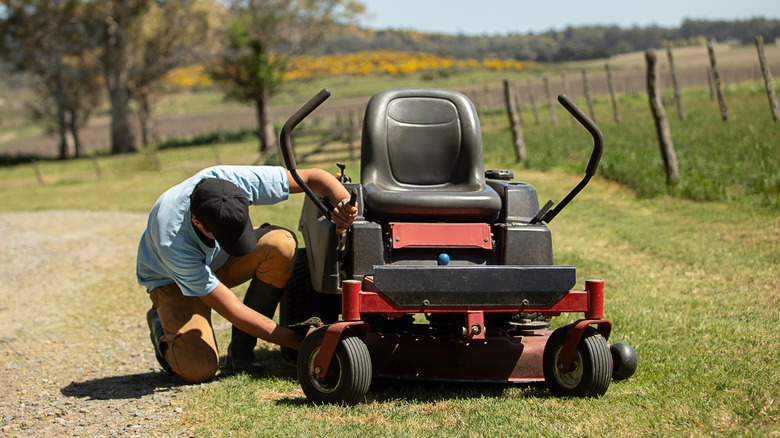Understanding the Lifespan of a Riding Lawn Mower
When you invest a few thousand dollars or more in a riding lawn mower, it’s essential to ensure that you’re getting the best performance and longevity from your purchase. The lifespan of a riding mower can vary significantly depending on how often it is used. On average, you can expect between 8 to 20 years of service if the machine is properly maintained.
Proper maintenance plays a crucial role in extending the life of your mower. This includes regular tasks such as cleaning the air filter, changing the oil, and inspecting the spark plug. Additionally, maintaining sharp blades is vital for efficient mowing and reducing stress on the machine itself. Sharp blades not only make the mowing process smoother but also help protect the grass from damage.
How Often Should You Replace Riding Mower Blades?
Most users will replace their riding mower blades every one to two years. However, those who use the mower frequently—several hours per week—may need to replace them more often. Before jumping to replacement, it’s wise to look for warning signs that indicate the blades may need sharpening. These signs include uneven grass height after mowing or brown, frayed edges on the grass. Sharpening blades twice a year is generally a good rule of thumb.
Some manufacturers do not recommend sharpening and instead advise replacing the blades entirely. It’s important to check the guidelines provided by the manufacturer to determine the best course of action. If the blades are bent, have dented edges, or show signs of cracks or rust, replacement is usually the better option. Structural damage cannot be repaired through sharpening alone.
When to Replace Instead of Sharpen
If you’ve already sharpened your blades two or more times, it might be time to replace them. Over-sharpening can weaken the metal, making the blade more prone to damage. Using a power tool to sharpen the blades can also cause the metal to become brittle if overheated. Additionally, if the blade becomes too thin due to over-sharpening or contact with debris, it could snap during use, posing a risk of injury to anyone nearby.
For many people, replacing the blades is a simpler and less time-consuming option than sharpening them. Most blades need to be removed from the deck to be worked on, which can be challenging when trying to sharpen them without removing them. If you’re already going through the effort of removing the blades, replacing them might save time compared to using a DIY sharpening tool or taking them to a professional.
Steps for Replacing Riding Mower Blades
Before starting the blade replacement process, it’s important to prioritize safety. Always follow the specific instructions provided in your mower’s manual for any maintenance or operational work, including blade replacement. Ensure that you order new blades that match the serial number and model of your machine.
Replacing blades on a riding mower requires different techniques than on a walk-behind model. While some people drive the mower onto car ramp jacks or over a ditch, this can be risky if the mower slips. The safest method is to remove the deck by taking off the hex bolts, hairpin cotters, and washers that secure it in place.
Once the deck is removed, flip it upside down carefully to access the nuts that hold the blades in place. Use a piece of wood to prevent the blades from spinning while you loosen the nut with a wrench. The nut should turn counterclockwise as it loosens. Align the holes in the new blades with the shaft and reattach the nut. Refer to the instruction manual for the correct torque setting to avoid over-tightening, which can make the nut difficult to remove later.
After securing the new blades, reattach the deck and test the machine to ensure everything is working correctly. With proper care and maintenance, your riding mower can provide reliable service for many years.







